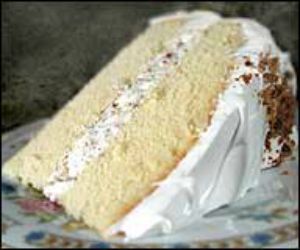Read your recipe carefully before starting: Be sure you have all the ingredients called for and that you understand the recipe clearly.
Learn more about Recipes:
What is a Recipe? How to Follow a Recipe. Why Some Recipes Don’t Work. What is Mise en Place?
Baking Rules – Basic Rules of Baking
For best results, have all ingredients at room temperature before mixing the cake.
Measure the quantities correctly: This is a baking must! One common cause of cooking failures is inaccurate measurement of ingredients. You can use the best ingredients in the world, but if you do not measure correctly, the recipe will not come out properly. Also always use level measurements (all measurements in a recipe are level).
Use good tools and utensils: Assemble all the bowls, pans, and utensils you will need on your counter or work table before starting. Use standard measuring cups and spoons.
Never carry on another activity while you are mixing a recipe. Distractions, no matter how small, lead to mistakes. Let the telephone ring!
Mix Carefully: Each type of baking has difference methods of performing the mixing. Follow the recipe carefully. Success of a cake depends on the correct blending of ingredients, the careful creaming of butter and sugar, as well as the gentle folding of egg whites (if added separately) to maintain maximum aeration. Please read Basic Rules For Baking.
Fold or Folding: A method of gently mixing ingredients. It is used for delicate or whipped ingredients that cannot withstand stirring or beating such as beaten egg whites or whipped cream without deflating the lighter mixture.
To fold: Use a rubber spatula, spoon, or even your hand to cut down through the mixture, move across the bottom of the bowl, and come back up, folding some of the mixture from the bottom over close to the surface. Turn the bowl often so the ingredients are evenly distributed. Work quickly but lightly, taking care not to deflate the lighter mixture and therefore decrease volume of final product.
Use Correct Pan Sizes: Use the type of pan specified in the recipe. Recipes are carefully calculated as to yield and changing the pan size also alters the baking temperature and time. Larger, more shallow pans need increased heat; smaller, deeper pans need decreased heat. The size of a baking pan or dish is measured across the top of the container from the inside edge to inside edge. The depth also is measured on the inside of the pan or dish from the bottom to the top of the rim.
Prepare the pan carefully according to the recipe. Place pans as near the center of the oven as possible. Do not place pans directly over another and do not crowd the oven (this makes for uneven baking).
Bake single layers in center of oven in the middle of the oven rack. Good circulation is important when baking more than one layer – stagger pans on oven racks so they do not block heat circulation from one another.
Spread cake batter evenly in the pans. Do not drop of knock pans to level the batter.
Use correct oven temperatures: Never increase a cooking temperature because you are in a hurry. Make sure the racks are placed properly before heating the oven. If the recipe calls for a preheated oven, preheat it! Preheat at least 15 minutes before baking. Do not open the oven door prematurely. A draft may cause your baked product to fall. You can ruin a cake with a slow start in a cool oven because the cake can rise too quickly and then fall when the oven heat takes a spurt upward.
A cake is done when the sides shrink back slightly from the side of the pan (except sponge and chiffon cakes, which cling tightly to the pan), when the top springs back when lightly pressed with fingertips, or when a cake tester or toothpick inserted in the center of the cake comes out clean. TIP: Spray the cooling racks with vegetable-oil cooking spray to help prevent the cake from sticking to it when cooling.
Cake is done when the internal temperature registers approximately 205 to 209 degrees F. on your cooking thermometer.
This is the type of cooking thermometer that I prefer and use in my cooking. I get many readers asking what cooking/meat thermometer that I prefer and use in my cooking and baking. I, personally, use the Thermapen Thermometer shown in the photo on the right. To learn more about this excellent thermometer and to also purchase one (if you desire), just click on the underlined: Thermapen Thermometer.
Storing Cakes: Before storing, be sure cake is completely cool; they will become sticky if covered while warm. It takes approximately 2 hours for a cake to cool completely. Store cakes in a container with a tight cover or invert a large bowl over the cake to keep it fresh and moist for several days. All cakes containing dairy products, including cream cheese, in the filling or frosting must be refrigerated.

